
All categories
Featured selections
Trade Assurance
Buyer Central
Help Center
Get the app
Become a supplier

(19206 products available)









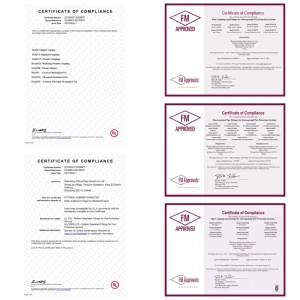





























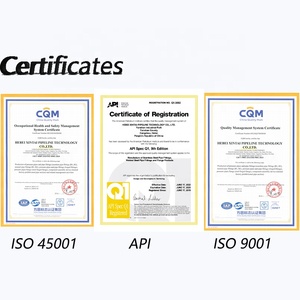
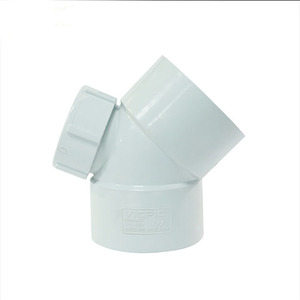




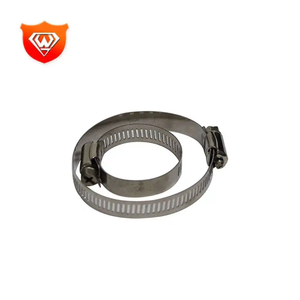


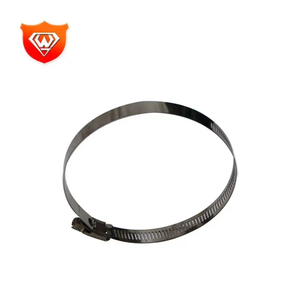


Elbow pipe fittings are used to change the direction of a pipeline. They are made at angles of 90, 45, and 22 degrees, as the most common angles. 90-degree elbows are commonly used to make a significant change in direction of flow, while 45-degree ones are used to change flow direction without restricting the pipe too much. These pipe fittings are vital in construction and mechanical operations.
Tee pipe fittings, as their name, are used to branch off or combine two pipeline flows at right angles into a 'T' shape. They come in various types, such as 'Tee with Reducing,' which joins three different piping widths. 'Equal Tee' is the most used among 'Tee' pipe fittings, as it has the same diameter on both sides for even distribution. These pipe fittings, apart from combining or splitting fluid flow, are also used in structural support with three branches.
Couplings are used to connect two ends of the same pipe, allowing the continuity of fluid transmission. 'Half couplings,' which link one pipe to another, are used for branching off. 'Full couplings' have two sockets and are used to connect two pipes. There are two types of couplings based on the material: threaded ones that were made for easy and quick pipe linking by screwing and welded couplings, which are meant for providing strong joints through welding.Another fitting is the plug, which helps close a pipe opening, preventing the fluid from flowing out. It is similar to a cap but provides internal seal threads instead of external seal threads like the cap.
A cap is designed to seal off or close the end of a pipe. It prevents fluid from leaking, thereby providing a perfect and secure seal at the end of the pipe. A cap can be used on the end of a pipe after testing the system to allow repairs, modifications, or future expansions. The end result of using a cap is aesthetic, as it makes a pipe look finished. However, on those that can become corroded, a cap can slow down corrosion inside the pipe.
Bushing fittings are used to connect two different pipe sizes in a plumbing system, thus enabling the use of differing pipe diameters. This adjustable fitting allows for a smooth transition between larger and smaller pipes to maintain an even and steady flow of fluid throughout the system. Bushings, which are tapered rings inserted between machine parts and often used as reduction fittings, can help reduce the size of a pipe.
PVC compression fittings are mainly used in water supply systems to join and connect different pipe sections. These pipe fittings help in efficiently transporting water through the right channels. They ensure a smooth flow, a pipeline's reliability and longevity, and lower installation costs as no special tools or skills are required to fix them. In terms of durability and versatility, compression fittings are resistant to corrosion compared to other metals.
Pipe fittings are used in HVAC systems to safely and securely transport air, refrigerants, and other fluids. They play a vital role in both heating and cooling systems that maintain building temperatures and provide essential air conditioning services. Depending on the application, different pipe fittings materials should be chosen. For instance, stainless steel or brass pipe fittings are mostly used due to the high level of resistance to temperature changes and pressure fluctuations in these systems.
Pipe fittings are commonly used in industries to transport chemicals, gases, and liquids through piping systems. In this area, only withstand harsh conditions and highly resistant materials, such as carbon steel, alloy steel, ornevere corroding bronze, should be used. Moreover, the right pipe fittings, such as reducers, nipples, and unions, help efficiently and effectively complete various processes in production, from moving raw materials to product manufacturing.
Pipe fittings have their standard applications in the plumbing industry, where they connect different pipes and parts of the plumbing system, such as water supply and drainage. Compression fittings, for instance, are frequently used due to their ease of installation and sealing methods. They are resistant to leakage and provide a better seal than soldered or welded joints. In areas where pipes may need to change direction or the flow needs to be altered, fittings like elbows, tees, and couplings are employed.
Pipe fittings are used to transport fuels, gases, and other fluids in the oil and gas industry through high-pressure, high-temperature, and highly corrosive environments. For these applications, such fittings must be made from high-strength, corrosion-resistant materials such as Inconel, Monel, or titanium alloys. These industries commonly use fittings such as flanges, plugs, and couplings, which are vital for providing system security and stability.
Fittings, like any other component, are affected by the changes in pressure and temperature within the system. Such variations can lead to thermal expansion and contraction or stress and deformation in some instances. High-pressure situations can also pose a fitting risk for burst or crack due to the immense force directed towards it. A good-quality fitting that can withstand thermal degradation or pressure surges must be used.
Pipe fittings frequently come into contact with chemicals, gases, and liquid substances that may cause corrosions. Notable examples in this regard are the oil and gas industry and chemical processing plants. Over time, corrosion can weaken and eat away at the fittings, hence resulting in leaks or failures. For this reason, it is critical to choose materials that are resistant to corrosion, such as stainless steel, brass, or copper.
Frequent movement or any mechanical vibrations in the surrounding environment can negatively affect pipe fittings over time. Such movements may cause loosening, cracks, or even breakage depending on how serious the vibrations are. In some cases, the pressure waves that travel through the pipes can also impact the fittings. To mitigate this situation, manufacturers use deburring tools to remove burrs from the pipes, which helps minimize friction and, therefore, wear and tear.
Pipe layer fittings embedded in the ground can be affected by factors such as soil composition and temperature, moisture, and atmospheric conditions, leading to oxidation, rusting, or pitting. High humidity, wet soils, and extreme temperatures can drastically shorten the life of fittings, especially those made of mild steel. To prevent this, manufacturers recommend using suitable materials for the environment.
Mechanical loads and stress, especially on fittings subjected to frequent changes in flow rate, can significantly affect their durability. Joints that are constantly on the move or under heavy loads experience fatigue, which ultimately results in cracking or failure. Fittings that are installed in areas where high loads or mechanical stresses are experienced should be of high-quality materials resistant to fatigue and high loads.
Pressure tests, which include hydrostatic and pneumatic pressure tests, check the fittings' capacity to withstand operating system pressure. During a hydrostatic test, the fitting is filled with water and pressurized to above its limits, while air or gas is used during a pneumatic test. Any drop in pressure or fluid leak is taken as a sign of fitting failure to pass this test.
Various types of tests are conducted to evaluate the mechanical and chemical properties of the materials used to make fittings. Commonly performed is tensile strength, hardness, and elasticity tests, which check for corrosion and chemical compatibility with the environments they are used. Non-destructive techniques, such as X-ray and ultrasonic testing, are also used to check for internal defects affecting the material's integrity.
Certifications and standards are typically issued by such organizations to ensure that only such products meet these criteria.
Dimensional verification involves measuring the fitting to ensure it meets specified standards and dimensional tolerances. Tools and equipment, such as calipers, micrometers, and gauges, are employed to measure parameters like diameter, length, and wall thickness. Compare the measurement to verify tolerance limits in standards such as ASTM, ANSI, or ISO. It ensures that the fittings have the right size and shape for safe and effective use in piping systems.
Surface integrity checks examine the fittings' exterior to identify potential defects, such as cracks, voids, or irregularities, that may affect performance. Commonly applied methods are visual inspection, dye penetrant testing, and X-ray radiographic testing, which help ensure surface defects don't lead to leak or failure in fittings. Surface roughness is also measured, which is critical as it affects fitting friction, which in turn affects how fast the pipe wears out.
Pipe fittings are certified to meet a particular standard and criterion, which gives an idea of the product's quality. Common certifications include the American Society for Testing and Materials (ASTM), American National Standards Institute (ANSI), International Organization for Standardization (ISO), and Underwriters Laboratories (UL). Having these certifications ensures the manufacturers adhere to the safety, material, and performance criteria for the fittings.
A1: Steel pipe fittings and brass pipe fittings are the most common materials. Other materials include nickel alloys, PVC, or polyethylene copolymer for fittings that require mechanical or thermal resistance, flexibility, ease of installation, and cost-cutting.
A2: A reducer is meant to connect two different sizes of pipes. Its major function is to reduce the flow of fluid by decreasing the diameter, thus enabling the maintenance of pressure and equalizing flow rate for optimal performance.
A3: Compression fittings are widely used because they are easy to install without welding or soldering. They are used in refrigeration pipes, copper tubing, and other plumbing systems, where a solid, leak-free joint is needed for efficient fluid transport.
A4: Fitting corrosion is caused by harsh chemicals, moisture, or extreme temperatures in the environment. Choosing materials that offer high resistance to corrosion, such as stainless steel, brass, or carbon steel, will prevent fittings from corroding.
A5: Socket weld fittings, which are used for small-bore piping, are welding joints characterized by the pipe being inserted into a recessed area of the fitting and welding around the joint. It provides a high level of strength and durability.